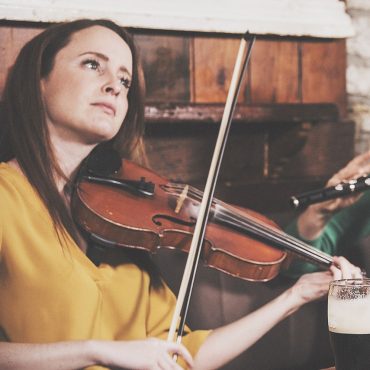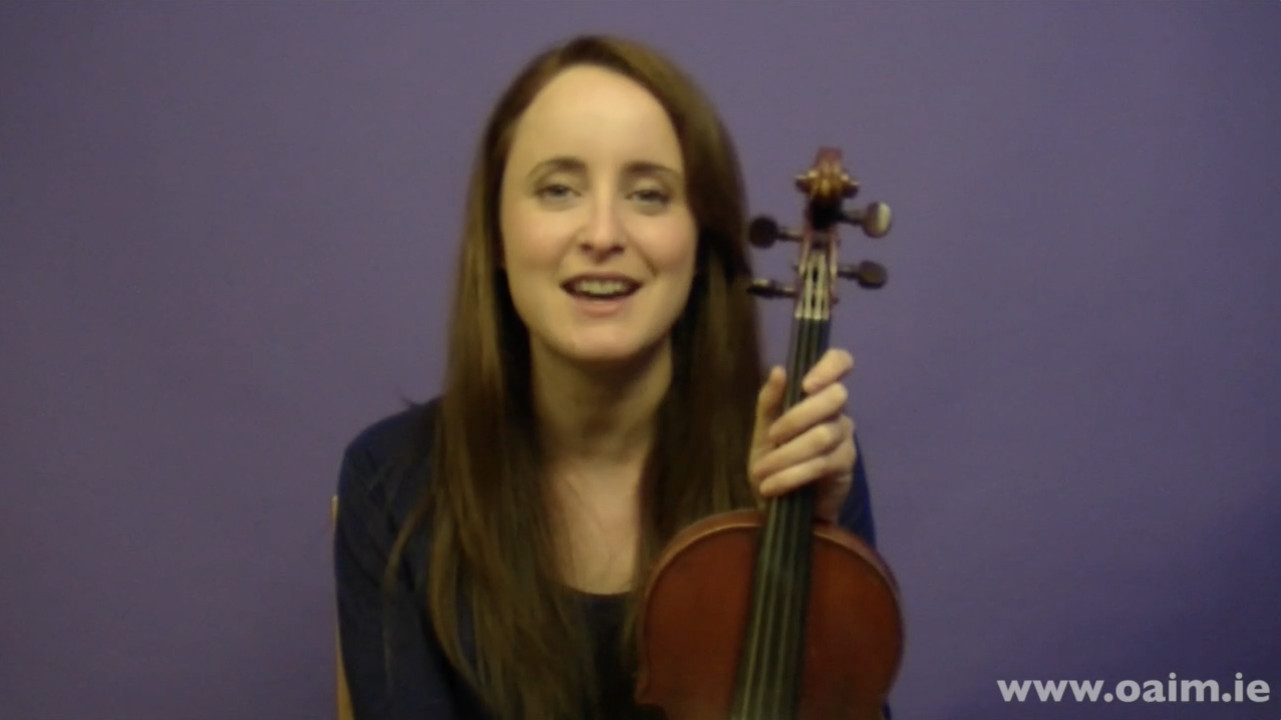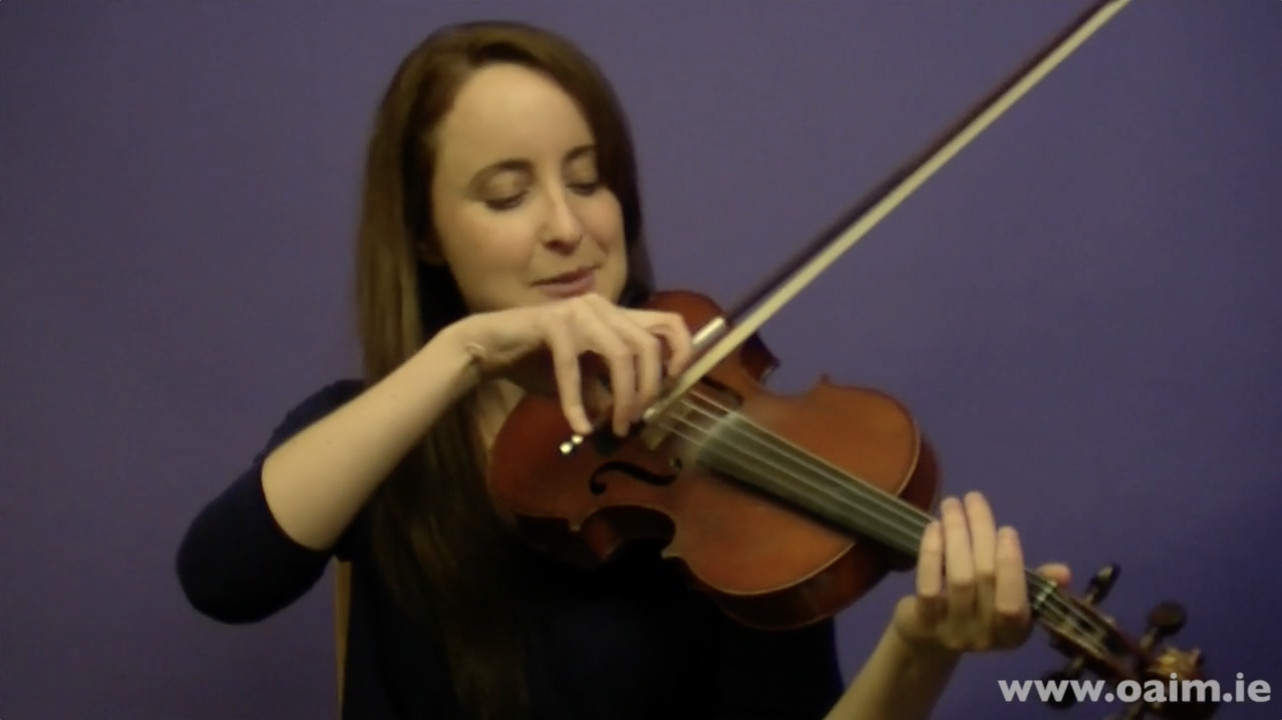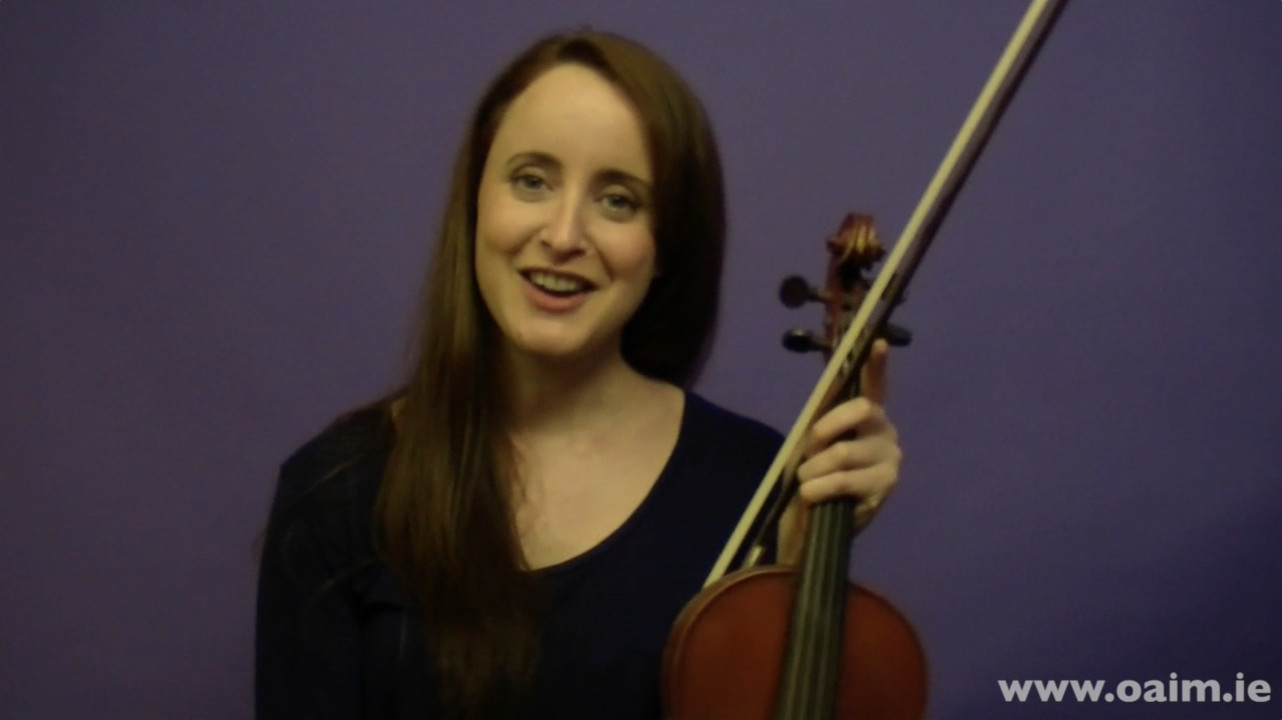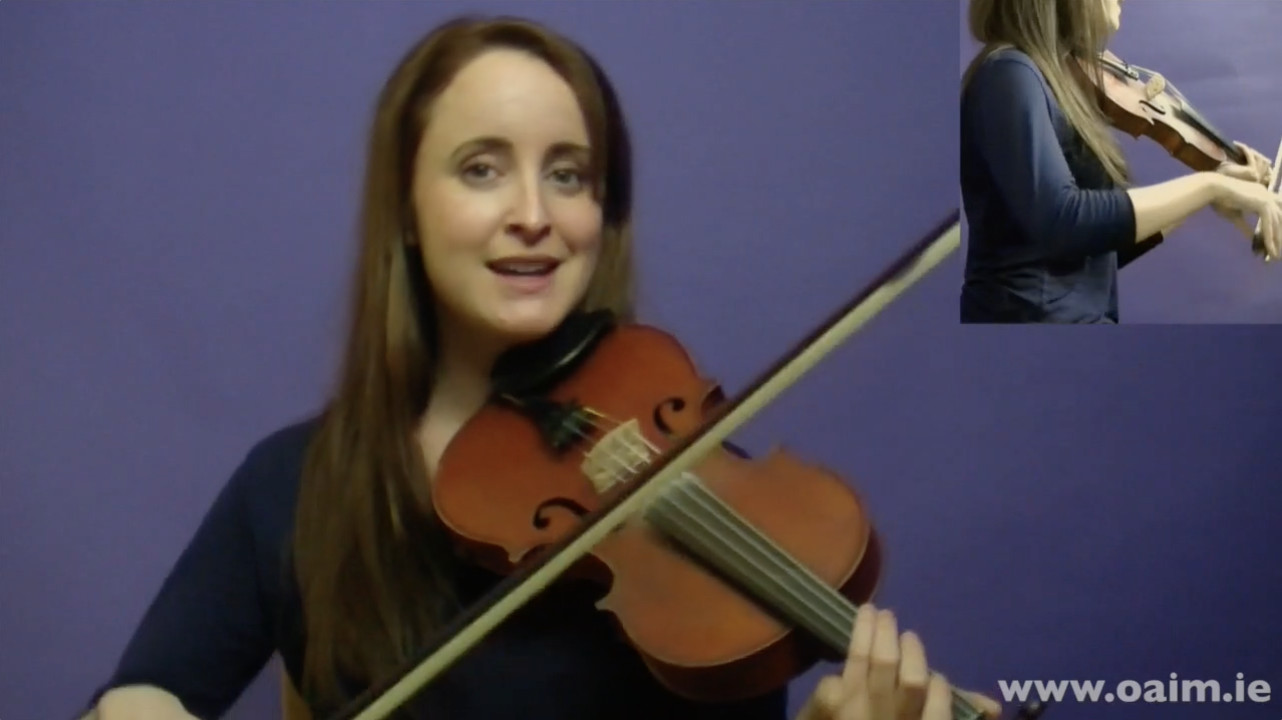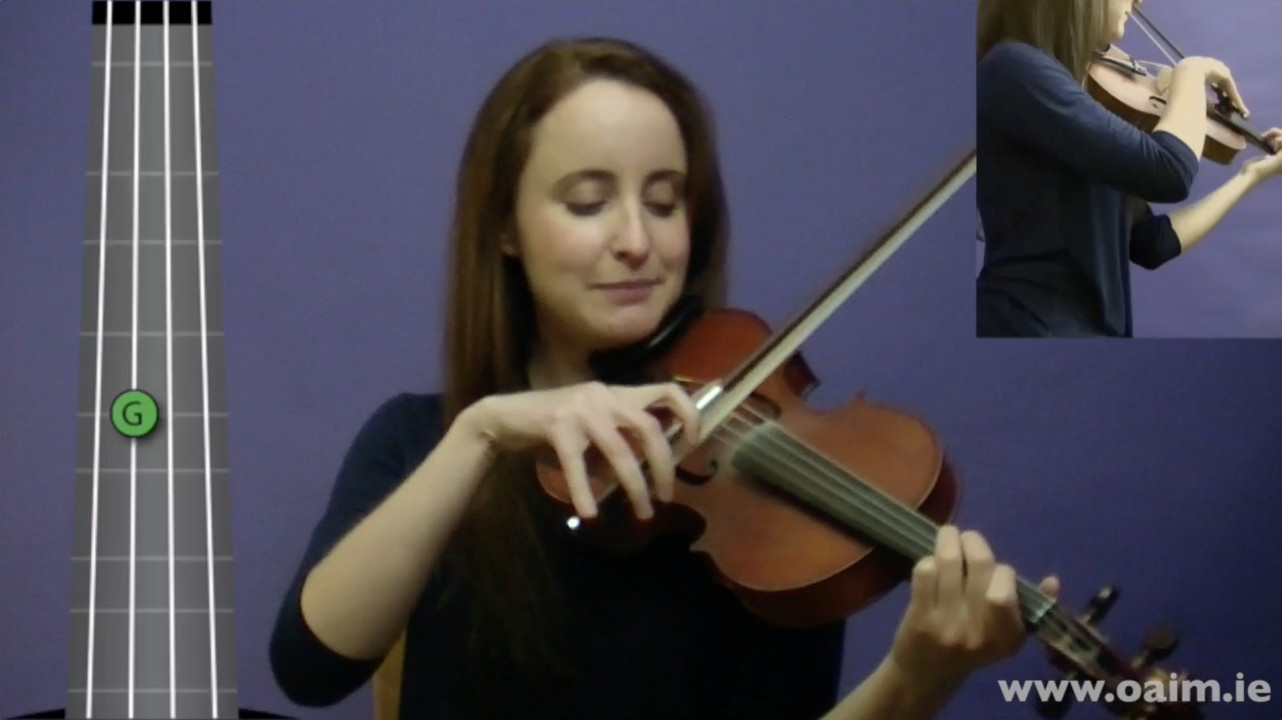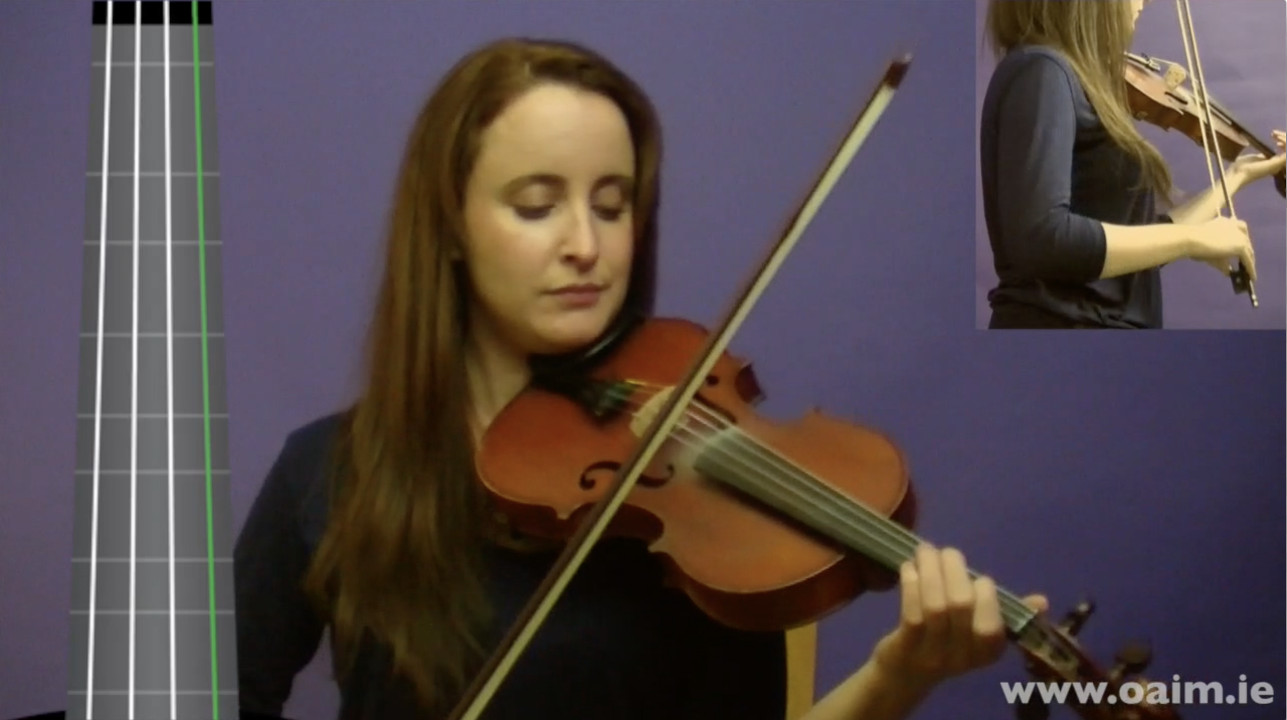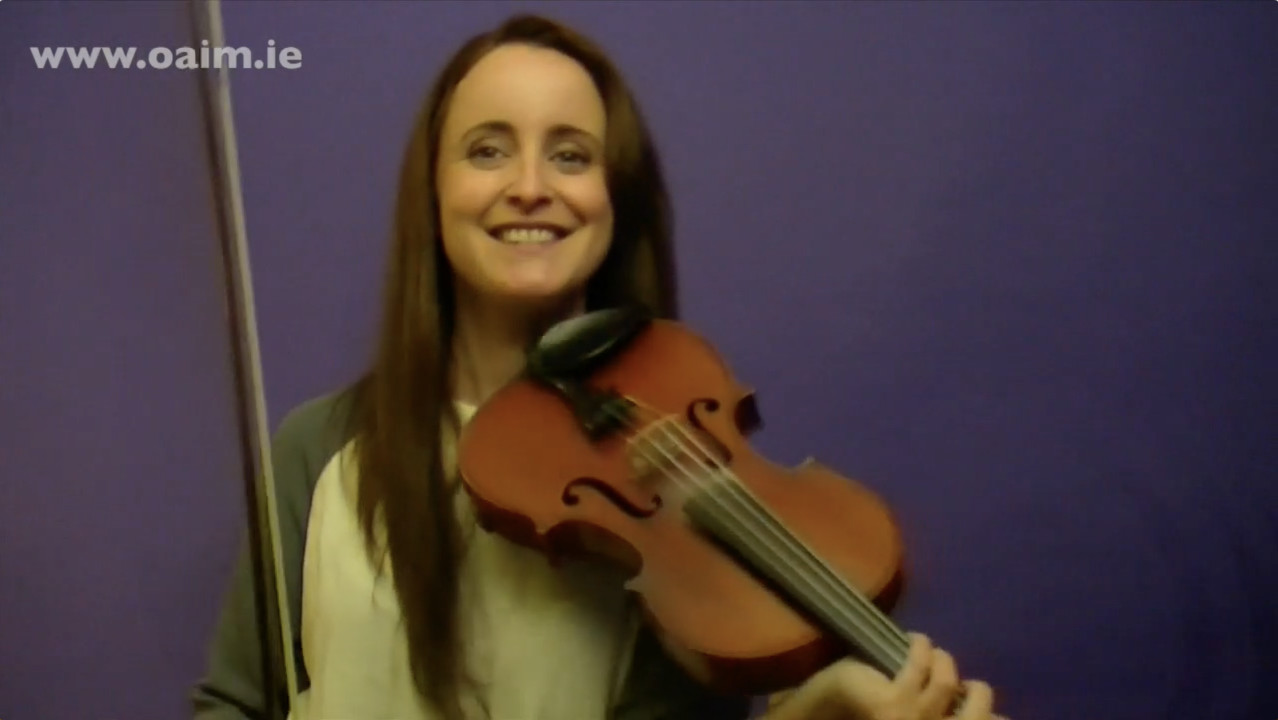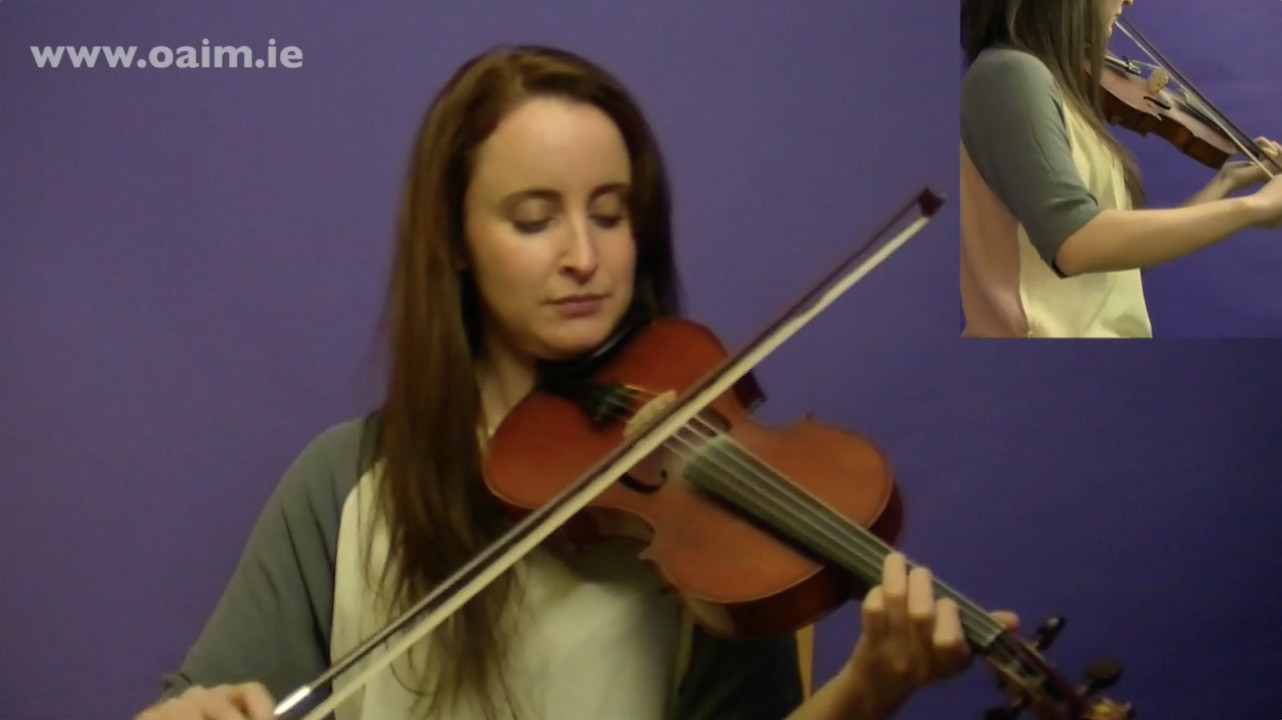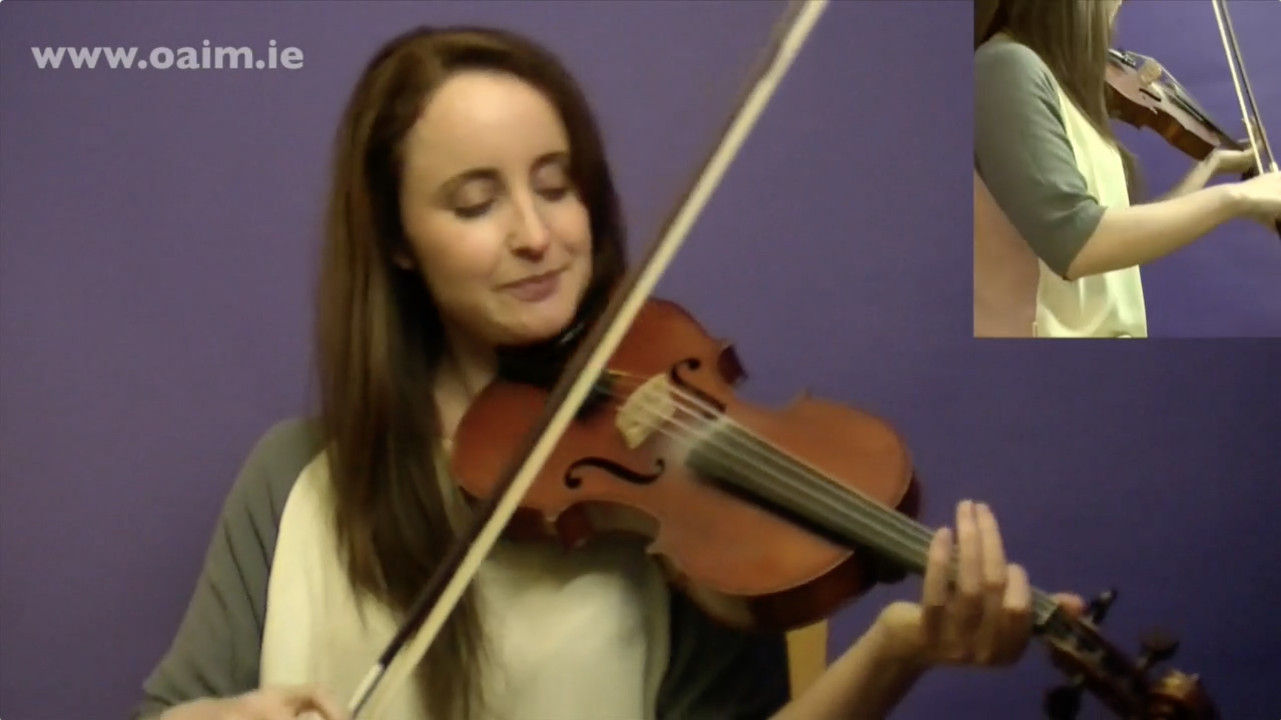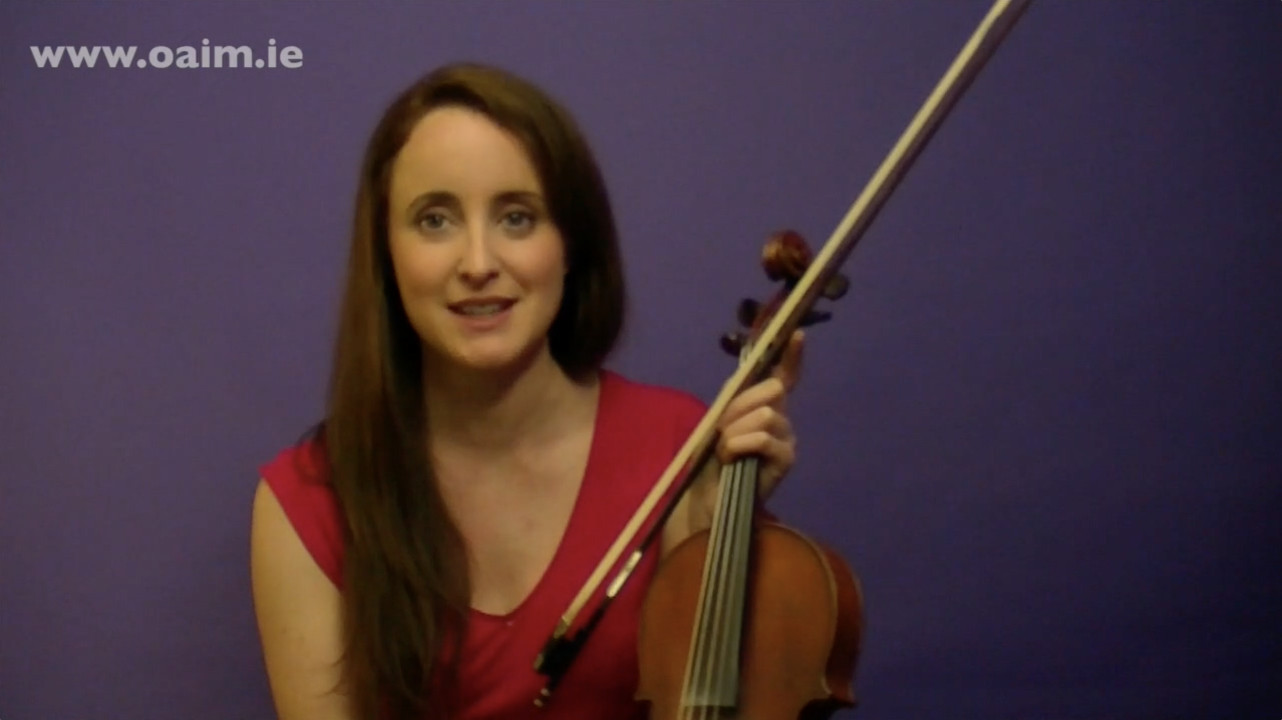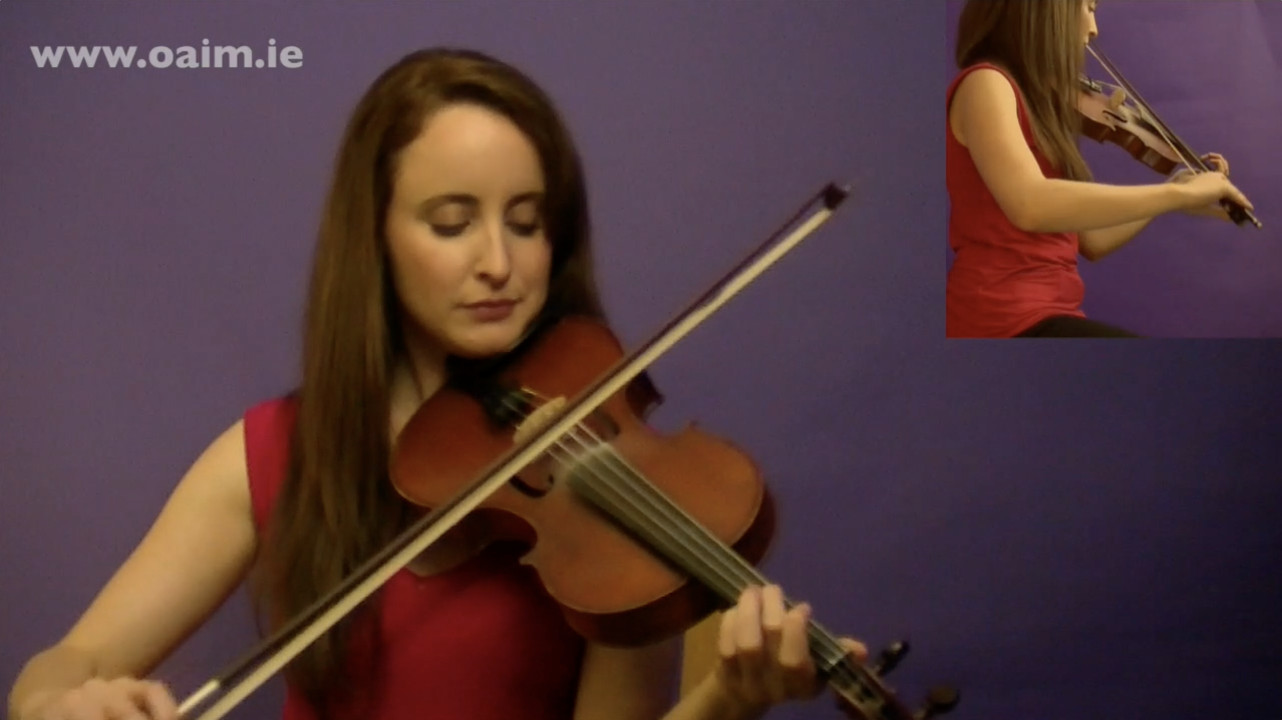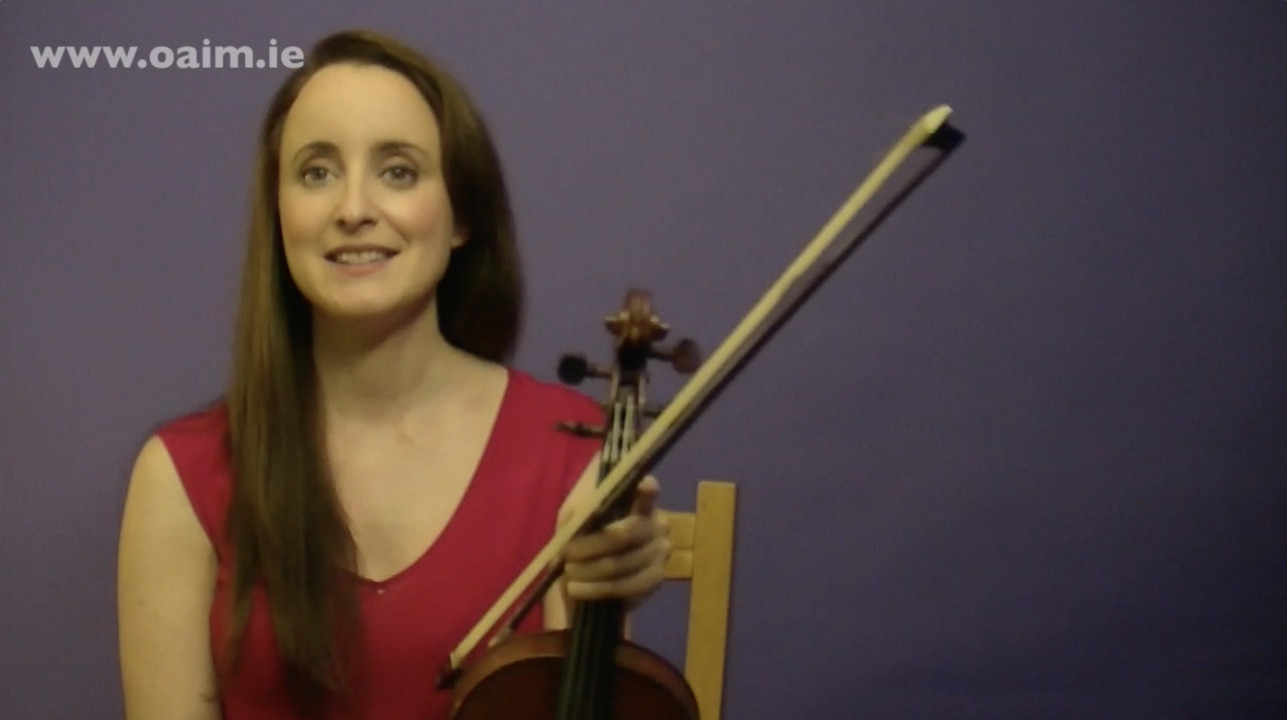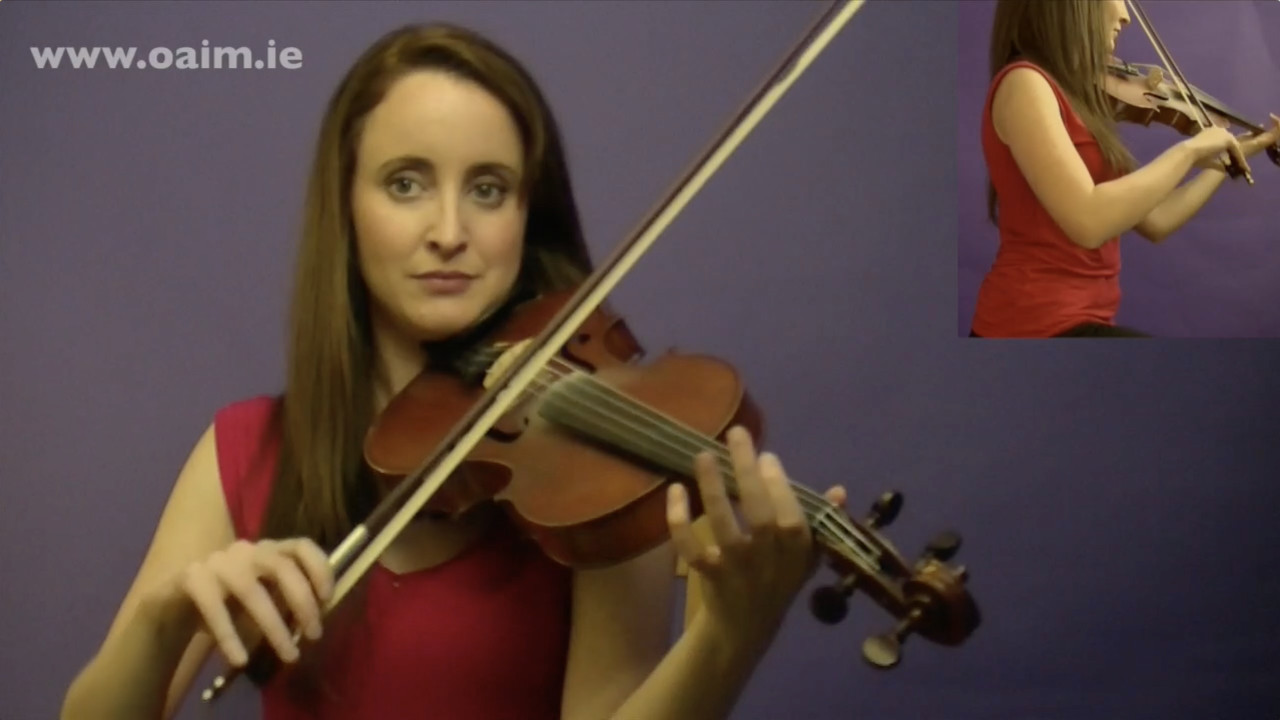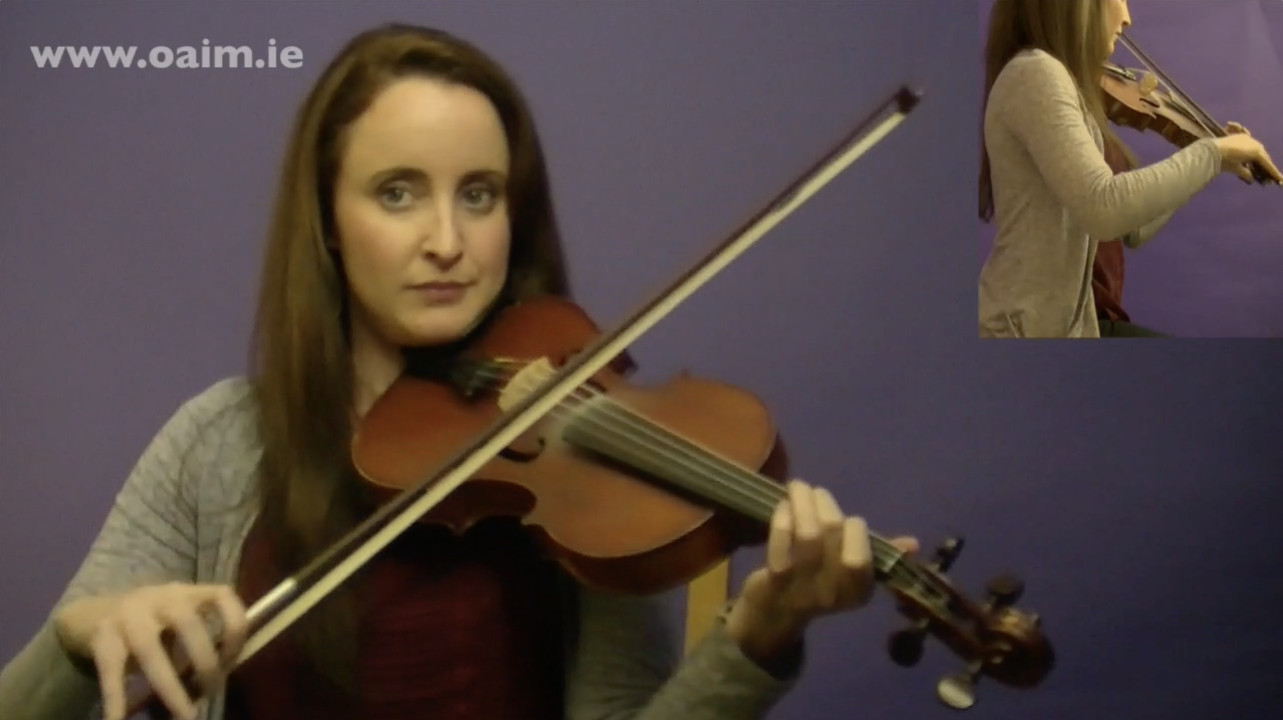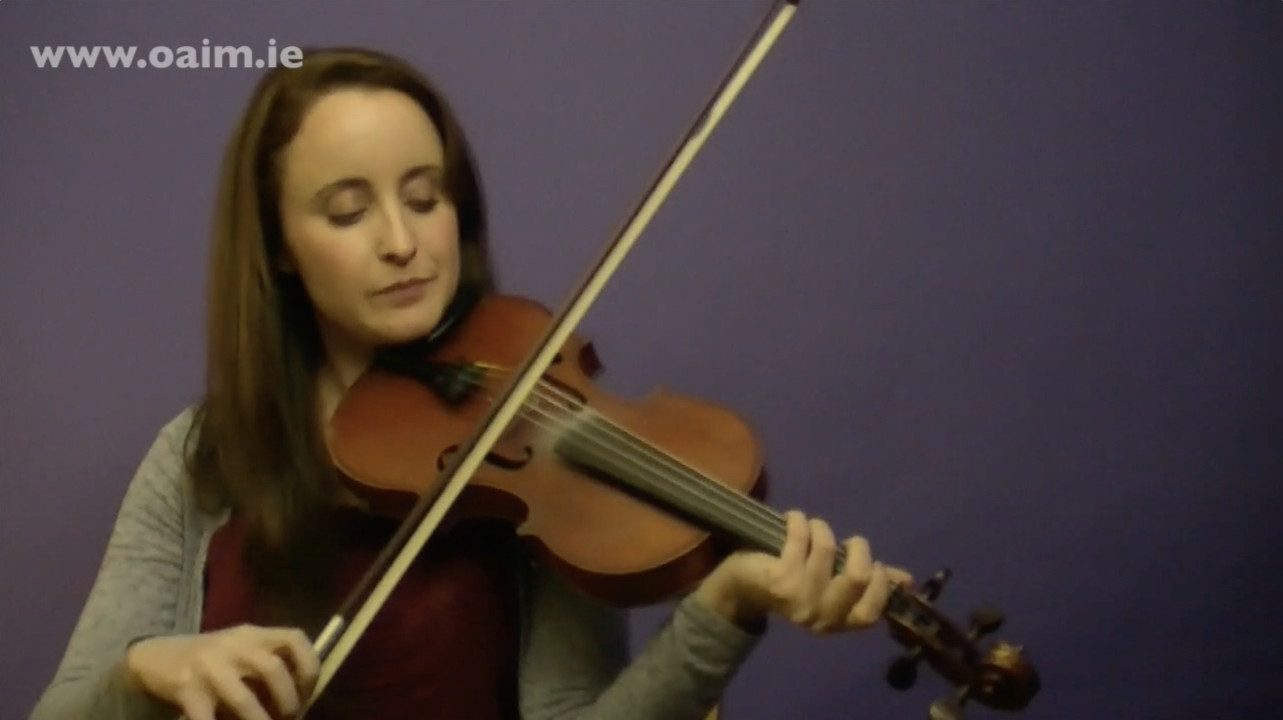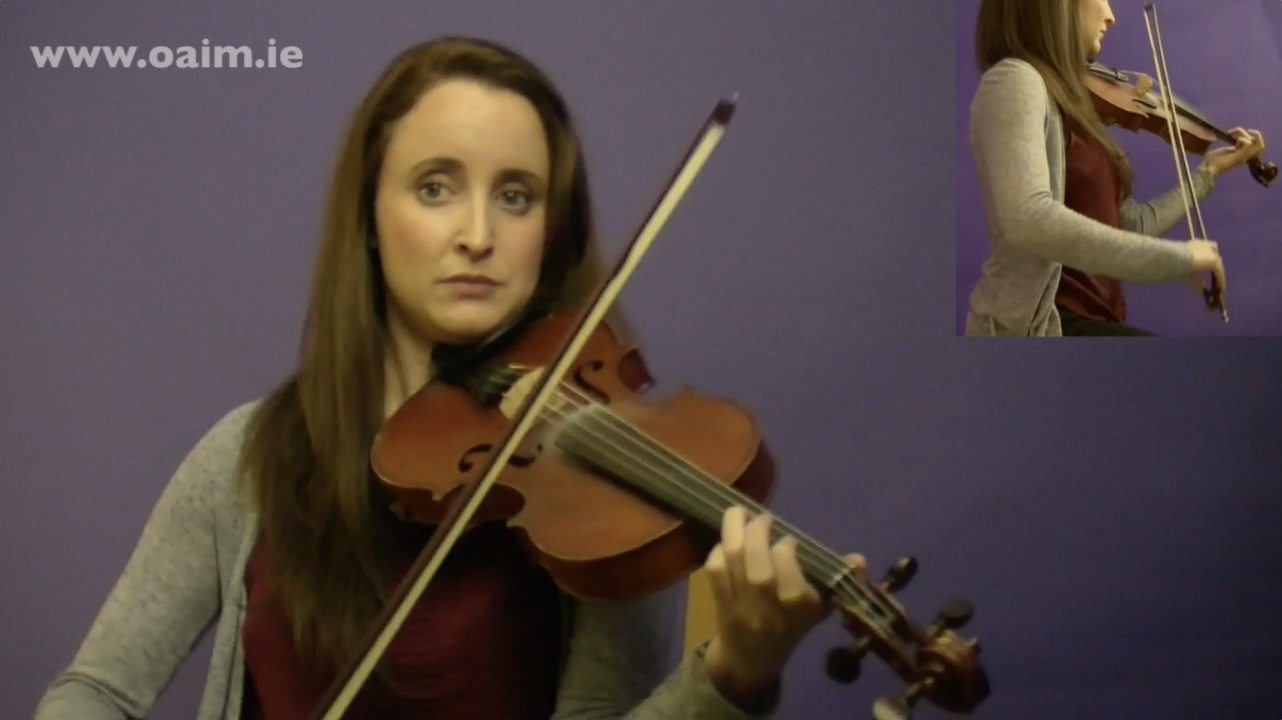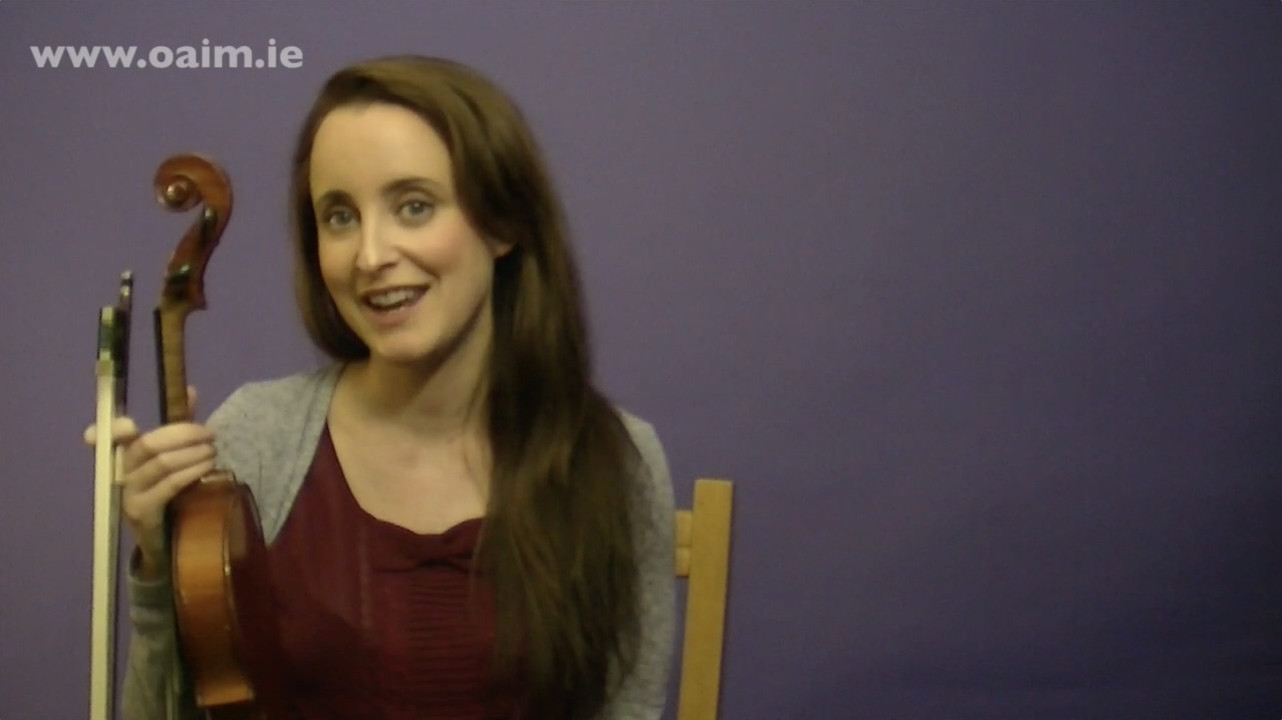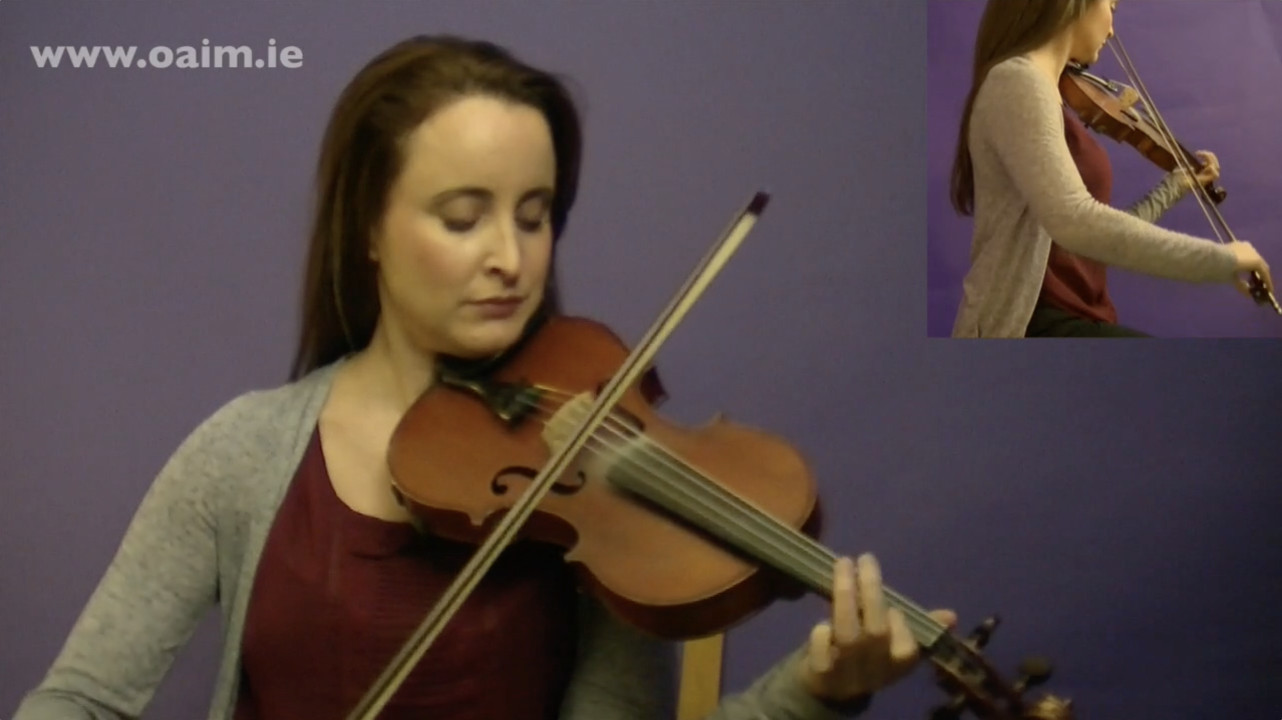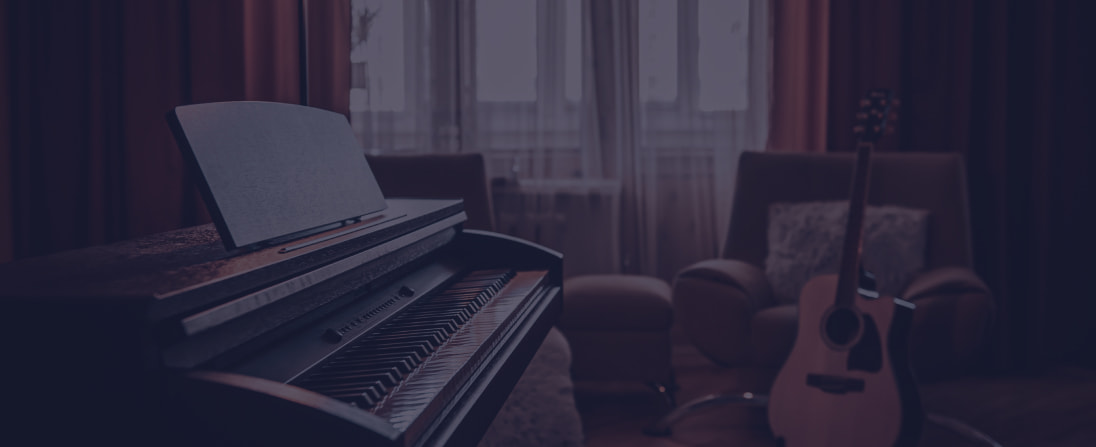The Fiddle Basics Course is really for those starting from scratch with the fiddle, or established violin players who wish to master the bowing and ornamentation styles that will give their playing the distinctive ‘Irish feel’. It begins with basics like introducing the different parts of the instrument and how to hold it so as to minimise strain; what the proper posture is, bowing technique and two easy nursery rhymes. Good basic technique is addressed and reinforced throughout the tutorials as it is seen as fundamental to any progression with the instrument. OAIM’s unique, animated fiddle graphics act as a visual aid for the notes, while the tutor’s instruction is shown in two angles, front and side angle, so that the student can get a better appreciation of the physical aspect of the technique being taught.
After the six introduction lessons, there is a progressive study of fingering, bowing, and ornamentation, using a wide variety of tunes. So as well as learning a technique, you have the added bonus of building a repertoire of Irish tunes (13 in total from this course alone). Emphasis is placed on tempo, rhythm, tone and technique.
Lessons on bowing cover:
- Long and short bowing for creating rhythm.
- Switching between A and D strings.
- The bottom string of G.
Lessons on ornamentation basics cover:
- Cuts and triplets.
- Bowed triplets and one note triplets.
- Rolls and second finger rolls.
- Chords and double stops.
The Irish traditional tunes taught on this course are:
- Maggie In The Wood
- Terry Teehan’s Polka
- Britches Full Of Stitches
- Hole In The Hedge
- The Ten Penny Bit
- Báidín Fheilimi
- Tripping Up The Stairs
- The Miller Of Glanmire
- The Rose In The Heather
- Rolling In The Ryegrass
- Peter O’Bryne’s Fancy
- Bill Malley’s
- The Millstream
Recommended Fiddle for Beginners
For a beginner fiddle the tutor recommends the Stentor Student 1 or 2 which comes in at around €150-€200. They have a nice tone and good strings. There is also the Hidersine range from €100-€150 if you want to go a little lower in price. Also make sure to buy a shoulder rest.
When starting the fiddle the most important aspects to work on are the Fiddle Hold and the Bow Hold.
1. Bow Hold
First of all when using the bow you must tighten it by turning the screw at the bottom of the bow clockwise. Don’t tighten it too tight just enough for there to be approximately 6-8 mm between the hair and stick. Also make sure to loosen bow when finished playing.
When learning to properly place your right hand, hold the bow stick with your left hand. Be careful to not touch the bow hair with your fingers. Oil from your hands can get onto the bow hairs and this will make them loose the friction needed when connecting with the strings to make sound. It is also important to keep the bow well rosined. Place your thumb on the underside of the bow stick, next to where the frog ends. Usually, there will be a small space between the frog and the leather or wire finger grip. That’s the spot where you want to place your thumb.
Next, the middle finger is placed opposite the thumb on the bow stick, with the ring finger placed right next to it. Let your middle and ring finger relax so that they curve over the top of the bow and rest on the frog. Then, place the tip of your little finger on top of the bow stick, slightly away from the ring finger. It’s very important that the little finger is curved so that it points down onto the top of the bow stick. If it is held straight, you will loose a lot of control of the bow.
Finally, place your first finger on the finger grip, contacting the bow close to the middle knuckle. Keep the first finger curved and pointing slightly back toward the other fingers on the bow.
As an exercise, hold the fiddle bow vertically in your right hand, start to crawl your fingers up to the tip of the bow and back down without the help of your left hand. This exercise will help strengthen and improve flexibility in your fingers.
2. Fiddle Hold
The fiddle is held horizontally (parallel with the floor) and is angled to the left of a straightforward position. Place the fiddle on your left collarbone and rest the left side of your jaw on the chin rest. Shoulder rests are very helpful to hold up the fiddle.
The elbow should be under the center of the fiddle. Keep the wrist gently rounded. Avoid resting the wrist against the fiddle neck. The thumb should be opposite the first or second finger. Maintain a curved, open space between the thumb and index finger.
If you stand when playing, stand straight with feet shoulder width apart, and with relaxed knees. If you prefer to sit, use a chair with a firm base, and sit up straight and sit towards the front of the chair.
3. Bowing
It is very important at the start to bow correctly as this may hinder your ability to play faster tunes and do bow ornamentation later in your playing. When bowing you must use your wrist and not your arm. When practicing, do long bow strokes starting with the bottom of the bow on a string, your wrist should be high here. Then bringing the bow down slowly with your elbow facing directly at the ground, it should not move backwards at all. When the bow is being pulled slowly down, your wrist gradually moves in and make sure you are bowing straight across the string and not sideways. Do this over and over and getting faster and faster. The swing, lift, interpretation, ornamentation and rhythm comes from the bowing and the bow wrist.
Don’t be put off by people saying that the fiddle is a difficult instrument. Ignore them! If you want to learn the fiddle, you can and you will absolutely love it. Enjoy each new thing you learn on the fiddle, rather than thinking about what you don’t know yet. Even just bowing a string has a calming, relaxing effect, so enjoy that. With each lesson and practice session you will build confidence. If you want to make progress more quickly, set an alarm on your phone for a daily practise session. Even 15/20 minutes a day will make all the difference.
Don’t move onto a new lesson before mastering the skills taught in a previous lesson. Particularly, take your time in learning to bow the strings initially without hitting off the other strings. By staying with the basics until you have perfected them, you will have created a great foundation for making faster progress later on.
If you are completely new to music, simply download a free app tuner and set it up beside you when you are bowing the strings, this way you will be able to get visual feedback that you are playing the string correctly. Plus it gives the added advantage of letting you know if your string is in tune. Over time, you will become familiar with the notes and how they should sound (i.e., the tone.) Check in with the Community Forum regularly to connect with other students and get support.
Getting the Right Size Fiddle
The best way to be sized for a fiddle is to ask a professional/teacher for help. If this is not possible the next best way to size a child for an instrument is to place a fiddle under the child’s neck. If their fingers can reach just over the head of the fiddle it is a good size. If their fingers do not reach the top of the head it is too big and if they fall far over the neck the instrument is too small.
Another way to measure for a fiddle if you don’t have access to an instrument, use a measuring tape. Lift the left arm and extend it fully to the side, palm facing upward, fingers flat and straight out. Place the measuring tape under the chin, touching the neck to the center of the palm. Don’t allow for any slack. Once you have the size in inches, use the size chart, below, to determine the child’s size:
| Violin Sizes | Arm Length Measurements (inches) | Approximate Age |
| 1/16 | 14″ to 15 3/8” | 3-5 years |
| 1/10 | 15 3/8” to 16 7/8” | 3-5 years |
| 1/8 | 16 7/8” to 18 1/2” | 3-5 years |
| 1/4 | 18 1/2” to 20 3/8” | 4-7 years |
| 1/2 | 20 3/8” to 22 1/4” | 6-10 years |
| 3/4 | 22 1/4” to 23 5/8” | 9-11 years |
| 4/4 (Full Size) | 23 5/8” + up | 12 years to Adult |

